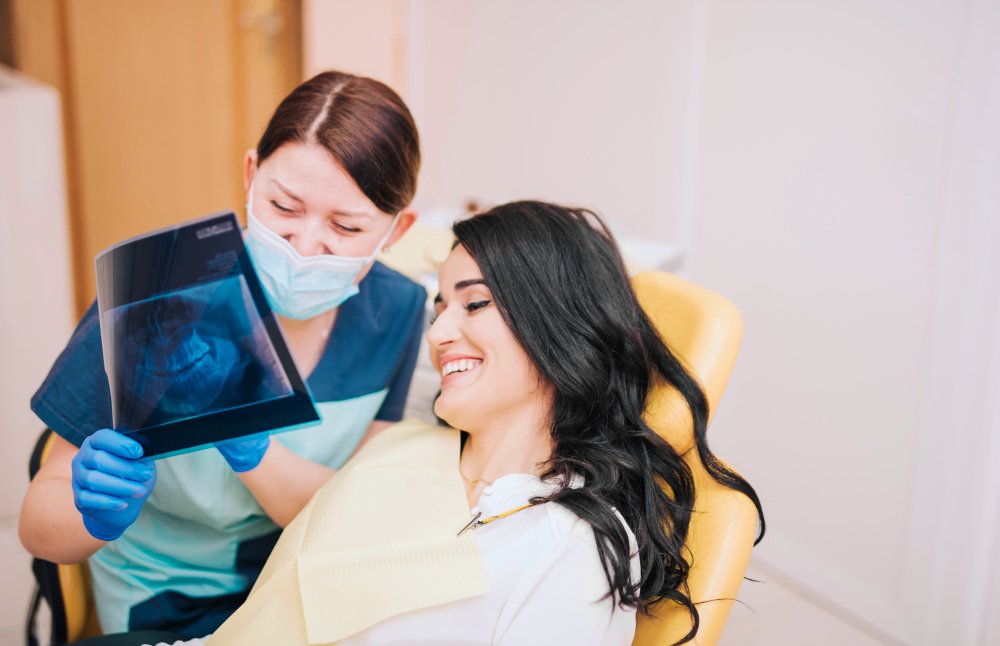The Importance of Why You Should Have An Early Orthodontic Treatment
Orthodontics is a specialized branch of dentistry dedicated to diagnosing, preventing, and treating dental and facial irregularities. This field addresses issues such as misaligned teeth, improper bites, and jaw discrepancies, ensuring patients achieve optimal oral health. Early orthodontic treatment is crucial for various reasons. Firstly, it helps prevent more severe dental problems in the future by identifying and correcting issues at a young age, thus reducing the risk of cavities, gum disease, and tooth loss. Secondly, improving dental aesthetics significantly boosts a child’s self-esteem, allowing them to feel more confident in social situations. Lastly, early intervention promotes better oral function, aiding in chewing and speaking, which can lead to healthier nutritional habits. By prioritizing early orthodontic care, parents can provide their children with the best opportunity for a healthy, beautiful smile and long-lasting dental health throughout their lives.
Benefits of Early Intervention in Orthodontics
Early intervention in orthodontics offers several key benefits, including the prevention of future dental issues, improved self-esteem, and enhanced oral function. By addressing misalignments and bite problems at a young age, children can avoid complex treatments later in life, reducing the risk of cavities and gum disease. Additionally, a well-aligned smile boosts confidence, encouraging social interactions and overall development. Proper alignment also facilitates better chewing and speaking, contributing to improved nutrition and communication skills. Overall, early orthodontic care sets the foundation for long-term dental health and well-being, making it a vital consideration for parents.
Prevention of Future Dental Issues
Early orthodontic treatment can help identify and address potential dental issues before they become severe. Misaligned teeth and jaw problems can lead to various complications, including cavities, gum disease, and tooth loss. By visiting an ortho dental clinic at an early age, dental professionals can monitor the development of the child’s teeth and jaw and intervene when necessary. This proactive approach helps to minimize the risk of more complex and costly treatments in the future.
Improved Self-Esteem and Social Interactions
Children and adolescents are particularly sensitive about their appearance. Misaligned teeth can lead to self-consciousness and a reluctance to smile, affecting their confidence and social interactions. Early orthodontic treatment can enhance dental aesthetics, leading to improved self-esteem. When children feel good about their smiles, they are more likely to engage in social activities and build healthy relationships, positively impacting their overall development.
Enhanced Oral Function
Properly aligned teeth play a crucial role in maintaining optimal oral function. Early orthodontic treatment can correct bite issues, such as overbites, underbites, and crossbites, which can hinder chewing and speaking. Addressing these problems early on ensures that children can eat and speak comfortably, leading to better nutritional intake and communication skills. This holistic approach to oral health can have lasting effects on a child’s development and well-being.
Common Orthodontic Treatments for Children
Common orthodontic treatments for children include braces, space maintainers, and functional appliances. Braces, often made of metal, use brackets, wires, and elastic bands to align teeth and correct bite issues. Space maintainers are crucial for preserving the gap left by a prematurely lost primary tooth, preventing adjacent teeth from shifting and ensuring proper alignment for incoming permanent teeth. Functional appliances help address jaw discrepancies by guiding the growth of the jaw and teeth, making them effective for correcting issues like overbites or underbites. These treatments work together to promote a healthy, well-aligned smile as children grow.
Braces
Traditional metal braces are one of the most common orthodontic treatments. They consist of brackets attached to the teeth, connected by wires and elastic bands. While braces are often associated with older children and teenagers, they can also be effective for younger patients who exhibit signs of malocclusion. An ortho dental clinic can evaluate the child’s needs and determine the appropriate timing for braces, ensuring optimal results.
Space Maintainers
When a child loses a primary tooth prematurely, a space maintainer can be used to hold the space open for the permanent tooth. This treatment is crucial in preventing adjacent teeth from shifting into the empty space, which can lead to alignment issues later on. An ortho dental clinic can provide these devices, which can be either fixed or removable, based on the child’s specific dental situation.
Functional Appliances
Functional appliances are designed to correct jaw discrepancies and improve the overall function of the mouth. These devices work by guiding the growth of the jaw and teeth, promoting proper alignment as the child develops. Early intervention with functional appliances can be particularly beneficial for children with a significant overbite or underbite, allowing for a more balanced facial structure as they grow.
The Role of Dental Veneers in Orthodontics
Dental veneers play a significant role in orthodontics by enhancing the aesthetic appeal of a patient’s smile after orthodontic treatment. These thin shells, made from porcelain or composite resin, are bonded to the front surfaces of teeth to correct minor imperfections such as chips, stains, or gaps. They can also address slight misalignments without the need for additional braces, offering a less invasive solution for those seeking a polished appearance. Furthermore, veneers provide protection for damaged teeth, helping to prevent further deterioration and ensuring long-lasting dental health, making them an ideal complement to comprehensive orthodontic care.
Aesthetic Enhancements Post-Treatment
Once orthodontic treatment is complete, some patients may still desire further aesthetic improvements. Dental veneers can help achieve a flawless smile by covering minor imperfections, such as chips, stains, or gaps between teeth. They are thin shells made of porcelain or composite resin that are bonded to the front surface of the teeth, providing a natural-looking finish. Dental veneers can be a great option for individuals who have completed orthodontic treatment and want to enhance their smile further.
Correcting Minor Alignment Issues
In some cases, patients may experience minor alignment issues after completing orthodontic treatment. Dental veneers can be used to address these issues without the need for additional orthodontic work. They can create the appearance of straighter teeth, improving the overall smile without the discomfort and commitment of braces. This option is particularly appealing for adults who may prefer a less invasive approach to dental aesthetics.
Protecting Damaged Teeth
Patients who have undergone orthodontic treatment may find that their teeth are more susceptible to damage due to the movement and alignment changes. Dental veneers can provide a protective layer over weakened or damaged teeth, preventing further deterioration. This additional protection can prolong the lifespan of the teeth and contribute to long-term dental health.
Conclusion
Early orthodontic treatment is a vital aspect of ensuring a child’s dental health and overall well-being. With benefits such as preventing future dental issues, enhancing self-esteem, and improving oral function, the importance of visiting an ortho dental clinic cannot be overstated. Common treatments, including braces, space maintainers, and functional appliances, provide effective solutions for addressing misalignment at a young age. Additionally, dental veneers can play a crucial role in enhancing aesthetics post-treatment, correcting minor alignment issues, and protecting damaged teeth. By prioritizing early orthodontic treatment, parents can set their children on a path toward a healthier, more confident smile.






